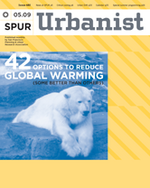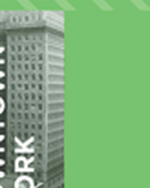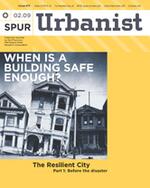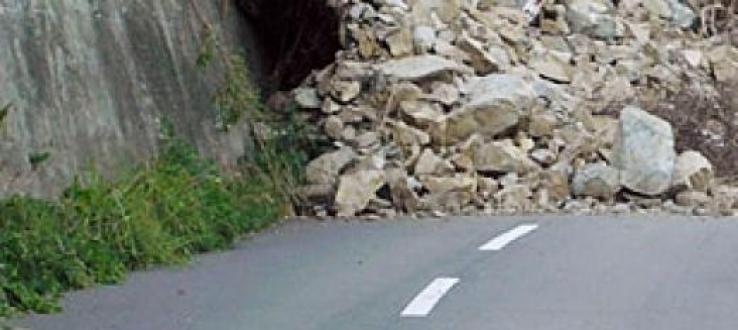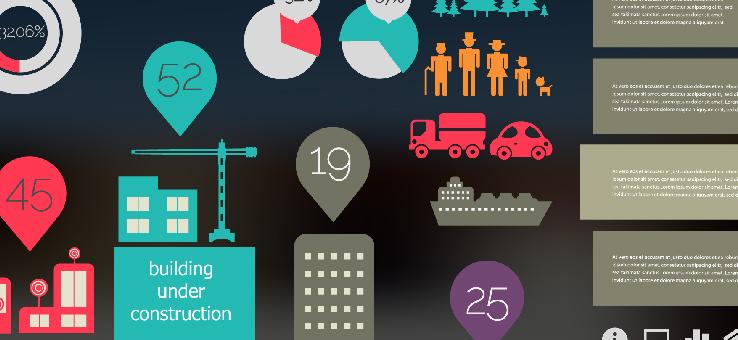
No Siesta for High Speed Rail in Spain
News / Since the Madrid-Barcelona leg of Spain’s AVE high-speed rail system opened last year, air travel in the corridor has been cut by half. But bullet trains aren’t just changing the ways Spaniards get around: according to an article in the Wall Street Journal, they are literally uniting the country, and revitalizing rural areas. Spaniards historically have been reluctant to travel, but “the AVE has…
Bunkers of the Recession
News / To the litany of statistics bearing out the severity of this recession, add one more: the number of Americans who moved between March 2008 and March 2009 was just 35.2 million, the lowest total in 47 years – and back in 1962, there were 120 million fewer Americans. Such relative stability might be viewed as a good thing for neighborhoods besieged by foreclosures, or…
Greening Towers in a Park
News / Toronto, Ontario, is, by any measure, one of North America’s greenest and most sustainable cities. It is also, by some accounts, the continent’s densest metropolis – but this is due in large part to the hundreds upon hundreds of “slab” highrises that sprouted across its outer neighborhoods in the postwar era. While Toronto’s “commie blocs,” as they’ve been derisively dubbed, provide the sort of residential…
SPUR Seeks to Improve the SFMTA Budget
News / SPUR's Transportation Policy Director today will tell the Board of Supervisors that the SFMTA budget approved by the SFMTA Board last week does not do enough to maintain quality transit service in these tight budget times. The SFMTA is leaving too much on the table in the form of new revenue and cost savings, at least $20 million of budget space that could be used…
Green Roofs in SF's Civic Center--and Around the World
News / National Geographic recently featured a photo essay of green roofs around the world. Featured projects included the Academy of Sciences (of course!), but also a Civic Center bus shelter that SPUR's green roofs task force worked hard to design and build. Diane Loviglio, a task force leader, came up with the idea that was later funded by the Academy as a way to bring green…
All the Transit Center's a Stage
News / A delightful performance in Antwerp's Centration, nicknamed the "Railway Cathedral," and one of the city's most famous landmarks.
NYC's Unbuilt Visions
News / New York Times "Streetscapes" columnist Christopher Gray highlights a few of Manhattan's ghost buildings—grand architectural plans shelved after the 1929 stock market crash. However easy it may be to compare then and now, let's hope that some of San Francisco's own grand plans—the Transbay Terminal, for instance—don't get stored away in a flat file somewhere, only to resurface decades after the fact.
Critical Cooling
SPUR Report / In the fight against global warming, there are many things San Francisco can do. In this report, SPUR evaluated 42 options for the city to reduce carbon emissions in San Francisco and the Bay Area.
It's Getting Wetter Around Here
News / A new report by the Pacific Institute reveals that a 1.4 meter sea level rise will inundate thousands of acres in California and impact almost half a million people by 2100. Hardest hit will be low income people and communities of color, the Bay Area in general, and critical infrastructure like ports, railways, and water treatment facilities. Property damage alone could cost $100 billion. The…
Take the California Budget Challenge
News / The newly-released California Budget Challenge lets you choose your priorities for the state while attempting to balance the budget. Users decide on policy options including whether or not to raise income taxes, restructure Proposition 13, or change parole supervision for non-violent offenders. You can send your choices on to your representatives, view pro and con arguments for each choice, and see the choices other Challenge-takers…
Reinventing America's cities
News / Nicolai Ouroussoff presents one of the most cogent arguments for reinvestment in our cities ever written in the New York Times. His vision is eco-urbanist, to use a term to describe the current era of urban planning, prevalent today after a half dozen previous eras that will be explicated brilliantly in the exhibit to mark the grand opening of SPUR's Urban Center
A Bay Area Economic Recovery Plan
News / With so much interest in how to access the Federal stimulus funds, the Bay Area Economic Institute is organizing the region's agencies and business groups to develop a coherent regional plan for recovery. This document here is the process and timeline for how the region will come up with its strategy, all of which should be completed by June 1. Project concepts are due in…
How Does the SF Budget Compare with Other Cities?
News / A new report from the Controller provides comparative information on how much the City and County of SF spends per capita on key services relative to other communities. While making clear that it is not advocating cuts to particular services, it provides an objective set of data points to make appropriate policy decisions. The report also provides information on how certain revenue sources have changed…
Skyscrapers are Green - Especially in California
News / Harvard economist Ed Glaeser blogs in the New York Times about why skyscrapers are the greenist form of development - particularly in California's mild climate. In his post he makes that case that urban living and working - often in high rises - is the greenest development form. See also Glaeser's article in City Journal. This post also reinforces SPUR's argument about adding jobs near…
The Future of Downtown San Francisco
SPUR Report / How can we bring more jobs into the region's most transit-rich employment center? SPUR proposes a sustainable plan for transit-oriented job growth in the Bay Area.
Lifelines
SPUR Report / We all know the big one is coming. But are we ready? It's a question we must confront now, with boldness and with honesty: what will it take to make San Francisco a resilient city?
Building It Right the First Time
SPUR Report / We all know the big one is coming. But are we ready? It's a question we must confront now, with boldness and with honesty: what will it take to make San Francisco a resilient city?
